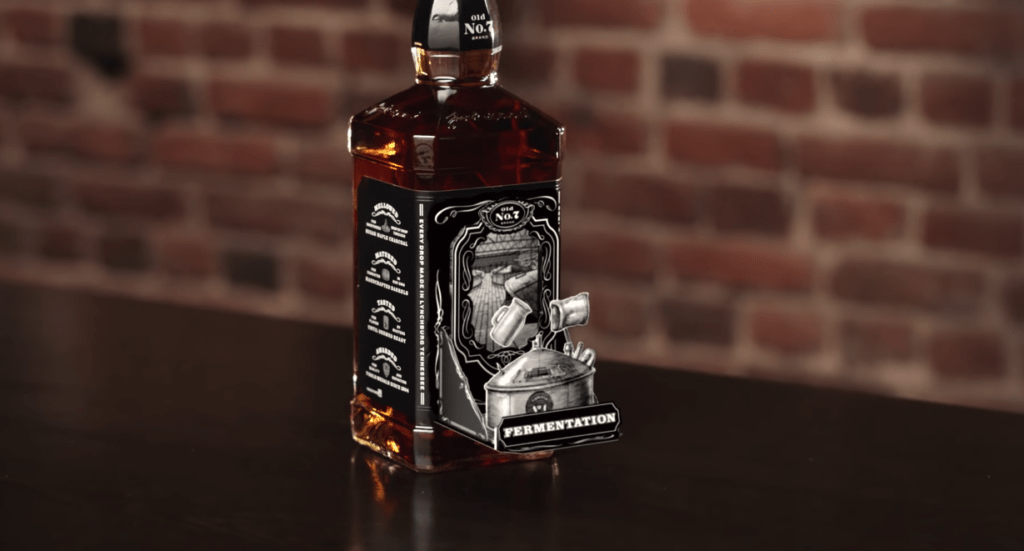Like most people, I haven’t experienced much of anything real but the interior of my house since March. But, I have seen the industry headlines — various brands scrambling to figure out how to connect with their audiences in a world where people are scared to meet, interact, and enjoy their lives. I’ve seen those that have turned to online marketing, digital activations and social media campaigns on Instagram or Facebook as well as AR-lite campaigns that just show videos, have face filters or similar features.

These aren’t necessarily changing the paradigm from what was around pre-pandemic, instead, focusing on driving people to the usual mobile and social links. Meanwhile, site-based campaigns and activations, at least in the US, have largely vanished or have been put on hold. This has obviously been an enormous challenge for industries that are heavily invested in their product experience being anchored to the real world — like wines and spirits, whose venues for consumption have shifted from restaurants and events to the home.
So then, how do brands connect to customers and tell their stories? Often, brands rely on their product packaging to do this, as people are now ordering and consuming these brands at home. This presents a huge opportunity for AR to step up and reach its brand-building potential. Imagine: what if you could create new connections to consumers by creating vivid experiences and brand stories, directly emerging from the packages themselves? What if you could change those stories over time, and lead consumers to find out more about the brand and products once they’ve had these experiences?
That is the promise of AR — a “brand in the hand.” Having worked to create these experiences at my studio Tactic, I can tell you that these AR experiences not only scale well at home but that people are sharing these experiences with others via social media and word of mouth, in many cases by the millions — a perfect marketing tool for the post-pandemic world.
AR’s secret weapon
The huge advantage of “brand in the hand” over everything else is that the branded experience of AR is directly linked to the product. That means the storytelling and experiential marketing aspect isn’t disassociated from the product itself as it is with other digital experiences, such as face filters and markerless or location-based AR. So, with the product and experience linked, creators and marketers can infer that each activation actually involves someone picking up, purchasing or consuming the product. As long as the product or packaging exists in the home or with the consumer, it opens a direct channel of communication with that consumer that can evolve over time. The AR experiences can be updated seasonally or episodically, turning the product or package into a “smart object”, enhancing the product with a digital content layer.
The impact is not just built-in brand loyalty, but an opportunity to reactivate those loyal audiences again and again. Some of our legacy wine brand AR experiences that have been out for some years now, like Rabble Wines, are still making waves on Instagram, while regular updates to our ongoing work with wine brand 19 Crimes have produced a huge uptick in users, most recently with the addition of the Snoop Dogg “Cali Red” Wine to their product line.

Navigating the pandemic
“Brand in the hand” experiences have proven to be somewhat pandemic-proof. Even as there’s been a change in the way customers interact with these brands, due to the shift in social spaces available, we’ve not made wholesale changes to our approach to creating AR experiences pre-pandemic vs. our current conditions. Instead, whereas there may have been more groups of friends sharing these AR experiences at a bar, party, or similar venue prior to the pandemic, now people may be experiencing these AR brand activations more often at home, post-purchase, and sharing them online with each other.
It’s also important to note that because users are scanning these products with their own devices, AR activations of this sort are “contact-free” as the AR camera works from a distance. This means these activations, whether done in public or at home, are a “safe” and “socially distant” activity, making these sorts of AR activations particularly relevant when many other on-site experiential activations are no longer possible.
Wine and spirit bottles are only the beginning. There are so many aspects to “brand in the hand” AR which could enhance the consumer experience in countless categories, including cosmetics, food, and beverages. There are even possibilities for augmented reality restaurant menus, OOH advertising, or within the fashion, automotive and pharmaceutical industries. For businesses open to innovation, AR offers a unique form of brand entertainment, storytelling, and information sharing — a perfect solution for a world trying to grapple with a new, more virtual normal.